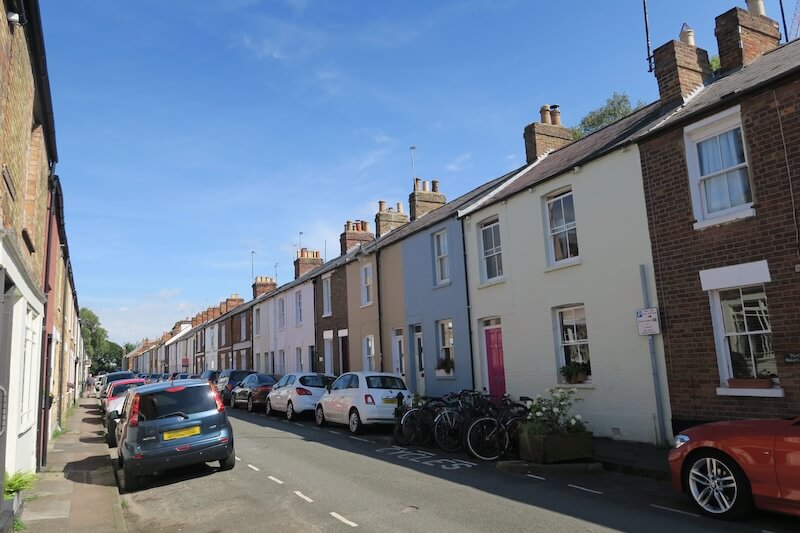
Five feeder cables run from the secondary substation to serve all the properties in the area.
The Bridge Street East feeder, the longest one on the island, stretches all the way from the South Street secondary substation, down Bridge St and looping halfway back down East Street. Once a one-way flow from secondary substation to homes, the installation of solar panels by local residents has turned this into a two-way system. On a long feeder like Bridge Street East detailed energy modelling carried out by SSEN has shown that residents installing PV panels and batteries at the end of the feeder helps the resilience of the local network.
Osney Supercharge aimed to use monitoring to make visible the generation, storage and use of electricity at individual properties in real time. Households across the island took part, installing solar PV, batteries, and monitoring. This gave participants better information about the way electricity use was co-ordinated ‘behind the meter’ in their homes and trial organisers gained an insight at a collective level, and across key elements of the local electricity infrastructure.
To anticipate the impact of integrating new solar panels into a household, a thorough ‘power flow’ analysis became essential. This analysis was instrumental in understanding how the energy generated by the solar panels would interact with the existing grid and home systems. By evaluating this data, the Osney Supercharge trial could make informed decisions about the placement of batteries, optimising energy storage solutions, and ensuring a balanced and efficient energy flow within the constraints of the local infrastructure and individual households.
The Osney Supercharge trial faced several challenges as it was implemented. One major issue was the spatial constraint posed by some of the smaller homes on Osney island, meaning installing batteries required careful planning and consideration of available space.
Additionally, the live data monitoring system installed in the secondary substation played a crucial role. It provided a real-time and historical overview of the energy dynamics in the area, enabling a detailed analysis of the existing situation.
By equipping households with PV systems, batteries, and real-time data access, the trial aimed to create a more informed and energy-conscious community, fostering a sustainable energy ecosystem on the island. As you look down the street, the sight of solar panels on individual house roofs not only captures attention but also symbolises a community which has a dedication to reducing environmental impact.
Reflective questions:
- How many PV panels can you see in the street?
- What challenges might there be to residents wanting to install EV chargers?
Resources and reports:
Osney Supercharge offered invaluable insights as to how a community can create and manage its energy use, storage and generation locally and at a household level, enabling us to minimise the need for supply from the grid. Read our Learnings from Osney Supercharge.
Thinking about improving the energy performance of your home and supporting the transition to net zero? If you live in Oxfordshire, start the process for free by using the Cosy Homes Oxfordshire Plan Builder tool.
Hear one of the participants of Osney Supercharge explain the purpose of the trial in this video:
